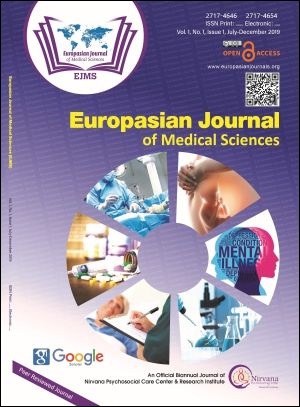Coronavirus Disease (COVID-19) Outbreak and the Strategy for Prevention
Keywords:
COVID-19, SARS-CoV-2, Pandemic, Corona VirusAbstract
The Coronavirus Disease (COVID-19) is the novel disease of the respiratory system, causing the ongoing pandemic with flu-like symptoms. It is caused by a virus known as SARS-CoV-2 (Severe Acute Respiratory Syndrome Corona Virus-2). This disease affected the entire world and various myths are circulating about its diagnosis, treatment, and prevention. The choice for diagnosis should be based on clinical and epidemiological factors and linked to an assessment of the likelihood of infection. A number of rapid diagnostic and serological tests are being used for the detection of suspected COVID-19 cases. However, the sensitivity and specificity of such newly marketed tests have not been evaluated and never up to standard yet. Therefore, it is not recommended any such immunochromatographic or serological rapid screening tests for the diagnosis of SARS-CoV-2 infections. The most reliable diagnostic test to confirm COVID-19 is PCR (Polymerase Chain Reaction) which is a molecular-based test for the detection of SARS-CoV-2. Eradication of highly contagious SARS-CoV-2 Virus that causing the ongoing deadly pandemic COVID-19, demands individual attention and awareness are necessary regarding the route and mode of transmission across the bounders throughout the entire world. Proper hand-washing, staying at the home and maintaining the social distance are proved to the most effective preventive measures and are immediate solutions to save human beings from this unseen enemy.
Downloads
Downloads
Published
How to Cite
Issue
Section
License
Copyright (c) 2020 Ahmad Naeem Sajed, Kapil Amgain

This work is licensed under a Creative Commons Attribution 4.0 International License.
The author(s) retain the ownership of the copyrights for their work published in EJMS without any restrictions. Upon submission, the author(s) grants EJMS a license to publish, including to display, store, copy, and reuse the published content.
License to Publish
By submitting a manuscript to EJMS, the author(s) grant the journal a non-exclusive license to:
- Publish and distribute the content in all formats, media, and platforms (both existing and future), while identifying EJMS as the original publisher.
- Reproduce, display, and store the content in both print and online formats, including institutional and digital repositories.
- Translate, adapt, and summarize the work, including reprints, extracts, and abstracts.
- Develop derivative works based on the original content.
- Include the work in electronic databases and provide links to third-party materials.
Creative Commons Licensing
In addition to EJMS’s publishing rights, authors grant third parties the right to use, share, and distribute their work under the Creative Commons Attribution 4.0 (CC BY 4.0) International License. This allows unrestricted use of the content, provided proper attribution is given to the original author(s) and the journal.

